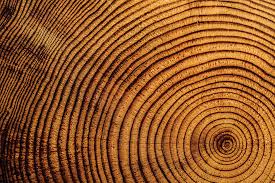
树木的干旱后遗症
Forests Suck Up Less Carbon after Drought
树木的干旱后遗症
Tree growth lags below normal for several years following droughts, a detail about carbon sequestration that climate models currently overlook. Christopher Intagliata reports
在干旱结束后,树木吸收CO2的水平并不会立即恢复,这个细节在现今的气候模型中并没有体现。
撰文/播音 克里斯多夫?因塔利亚塔(Christopher Intagliata)
翻译 李轩
Climate scientists forecast sea levels to rise anywhere from one to four feet by the end of the century. That's a pretty big range. And there's a good reason for that: there's a lot of uncertainty baked into climate models.
气候学家预测海平面到本世纪末将会上升1到4英尺。这是一个非常大的变化幅度,因为,在气候模型中有很多不确定的因素。
Take, for example, the way climate models predict how trees respond to drought. "Drought in these models is treated as a light switch"—either on or off—“but in the real world we know that drought damages trees, and it can take a while for trees to repair this damage and recover."
气候模型中树如何应对干旱就是一个例子。“在这些模型中,干旱被视为一种开关”,要么是开的,要么是关的,“但我们所知道的实际情况是,干旱会损伤树木,恢复损伤需要一定的时间。”
William Anderegg, an ecologist at Princeton University. He and his colleagues examined tree ring data from more than 1,300 sites around the world. And by comparing the rings with known drought records they found that trees don't simply kick back into gear as soon as rains return. Drought actually puts the trees' water transport systems under a huge amount of tension, he says, causing air bubbles to leak in, which damages or blocks those pipes. "I often compare this to a sort of a heart attack for a tree. That in some cases it can be lethal and in some cases they can repair that blockage."
William Anderegg 是普林斯顿大学的一名生态学家。他和他的同事查看了世界上1300个地点的树木年轮数据。通过与干旱记录比较,他们发现树木的健康状况并不会在雨水来临后立即恢复。实际上,干旱让树木的水分运输系统承受了巨大压力,他说,这使得大量气泡进入其中,这会损伤或堵塞树木的导管。“我经常把它比作树的心脏病,如果树无法修复,有可能会因此死亡。”
That drought 'hangover' causes tree growth to lag five to ten percent below normal for several years following the dry spell. "This is a problem because forests currently take up about 25 percent of human emissions of CO2, which is an incredible break on climate change.” And the less CO2 the trees are able to take up—the warmer it gets. The findings appears in the journal Science. [W. R. L. Anderegg et al, Pervasive drought legacies in forest ecosystems and their implications for carbon cycle models]
这种干旱后遗症会使树木在干旱期后的几年生长迟缓5~10%。“这是一个问题,因为森林在一般情况下会吸收25%人类排放的CO2,这是一个令人难以置信的数字。”而林木吸收的CO2越少,气温就会升高得越多。这个发现发表在了《科学》期刊上。
The thing this study makes clear, is that predicting climate change… is hard. "It'sreally hard. These models have an incredibly challenging task of representing processes that occur from a leaf scale to a continent scale in space. And from several seconds to hundreds of years or at least a hundred years in time." But maybe a better understanding of how much carbon trees soak up—and how much they don't—will make climate forecasting just a little bit easier.
这个研究说明,要想准确的预测气候变化——是相当困难的。“就是这样,这些模型很难将小尺度过程造成的影响反应到宏观尺度中,也很难将短时间发生的过程推演至百年之后。”不过我们倒是可以对树木在各种情况下能吸收多少CO2有更清晰的了解,这或许可以让预测变得稍微容易一些。
未经书面许可任何人不得复制或镜像
京ICP备11000850号-1
 京公网安备11010502039775号
京公网安备11010502039775号 信息网络传播视听节目许可证0111611号
国家科技基础条件平台

















